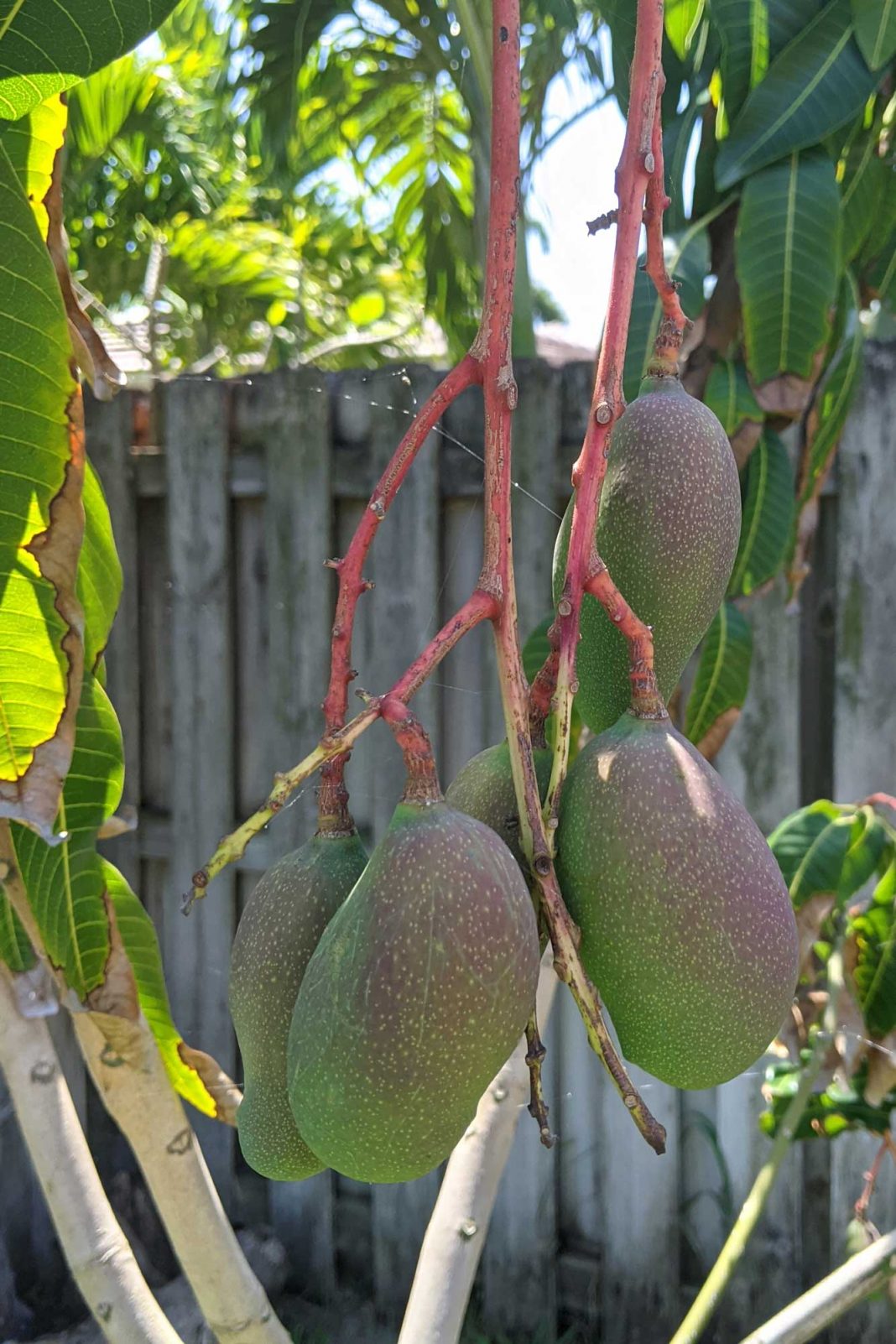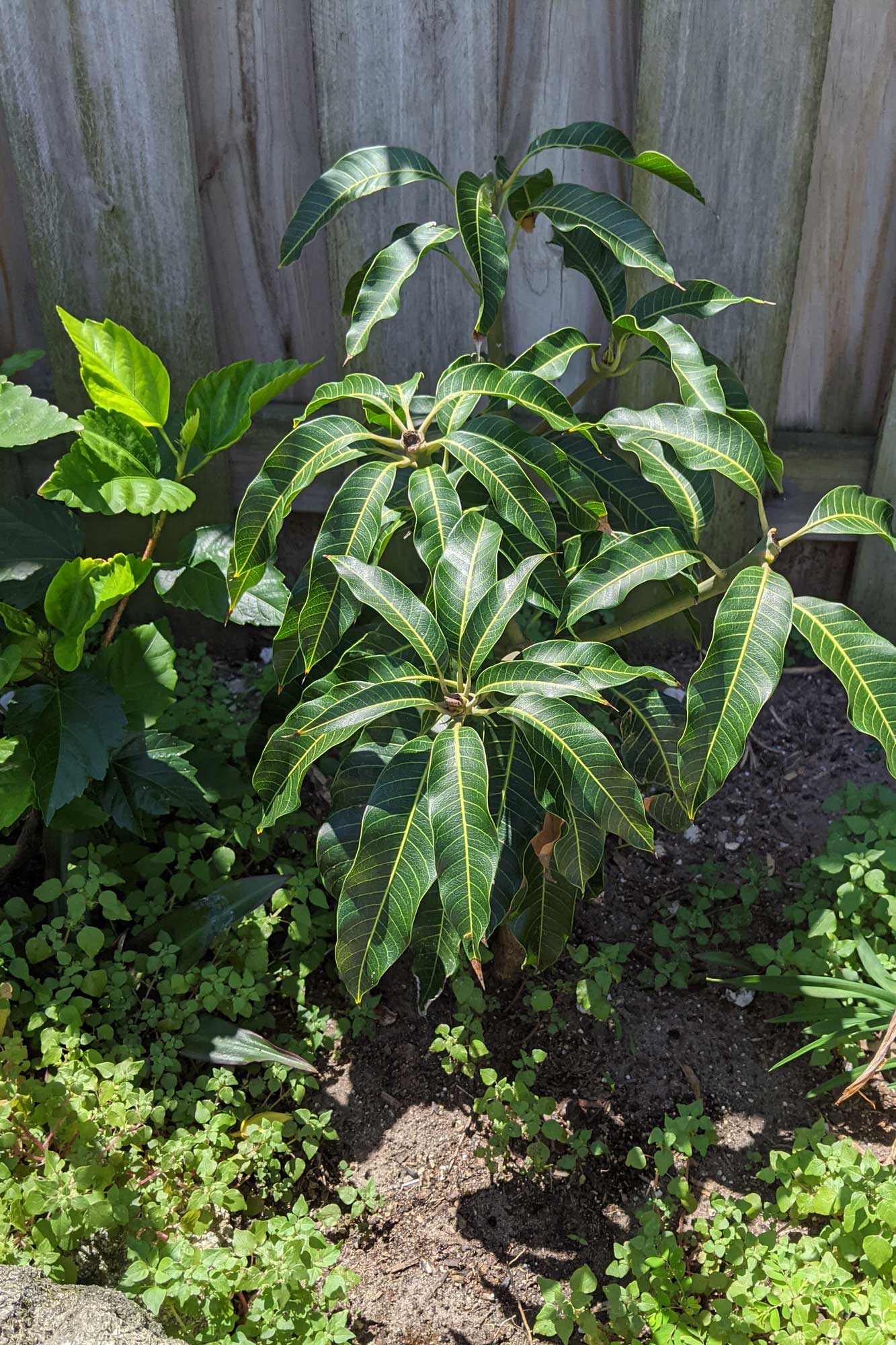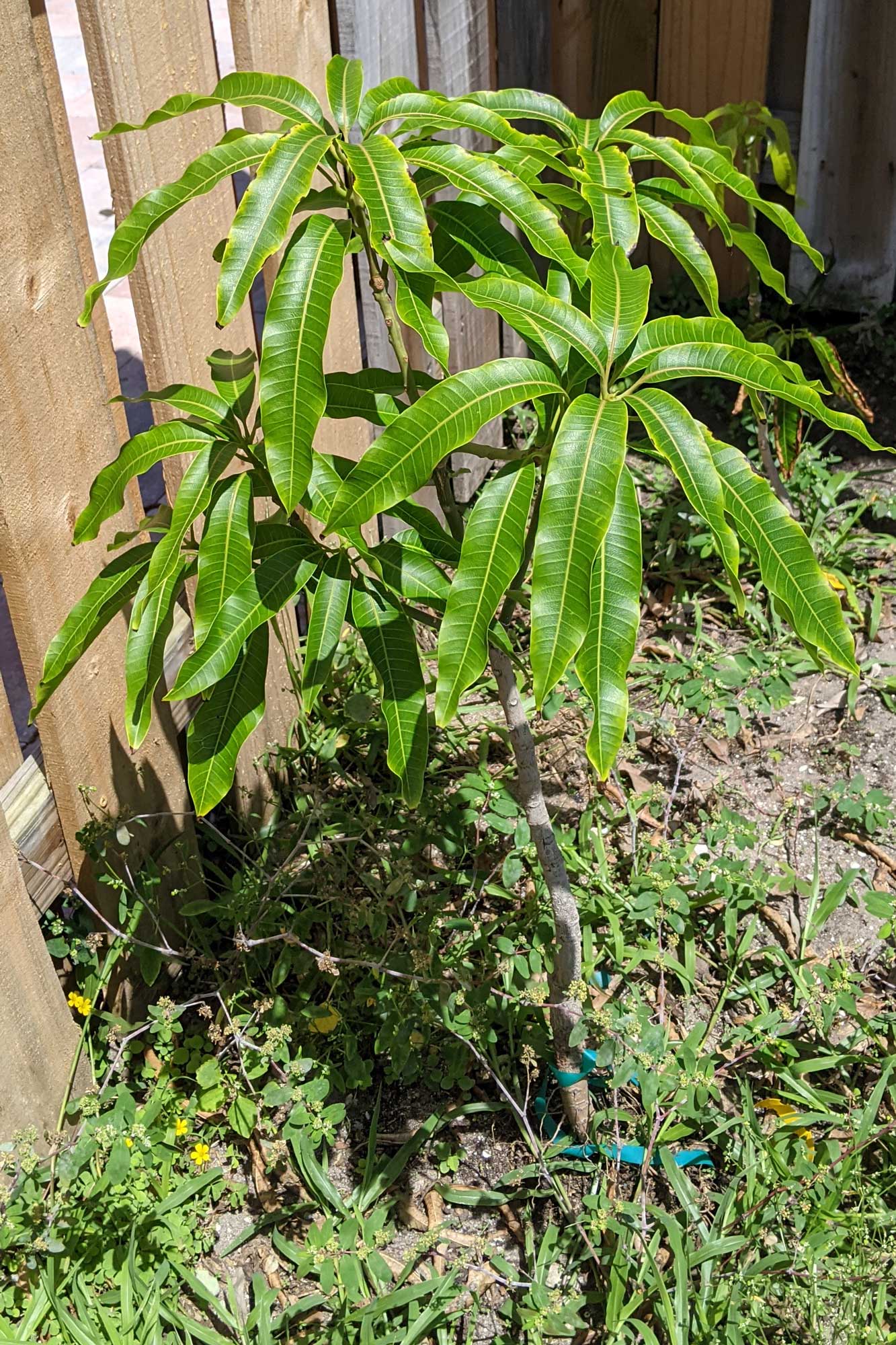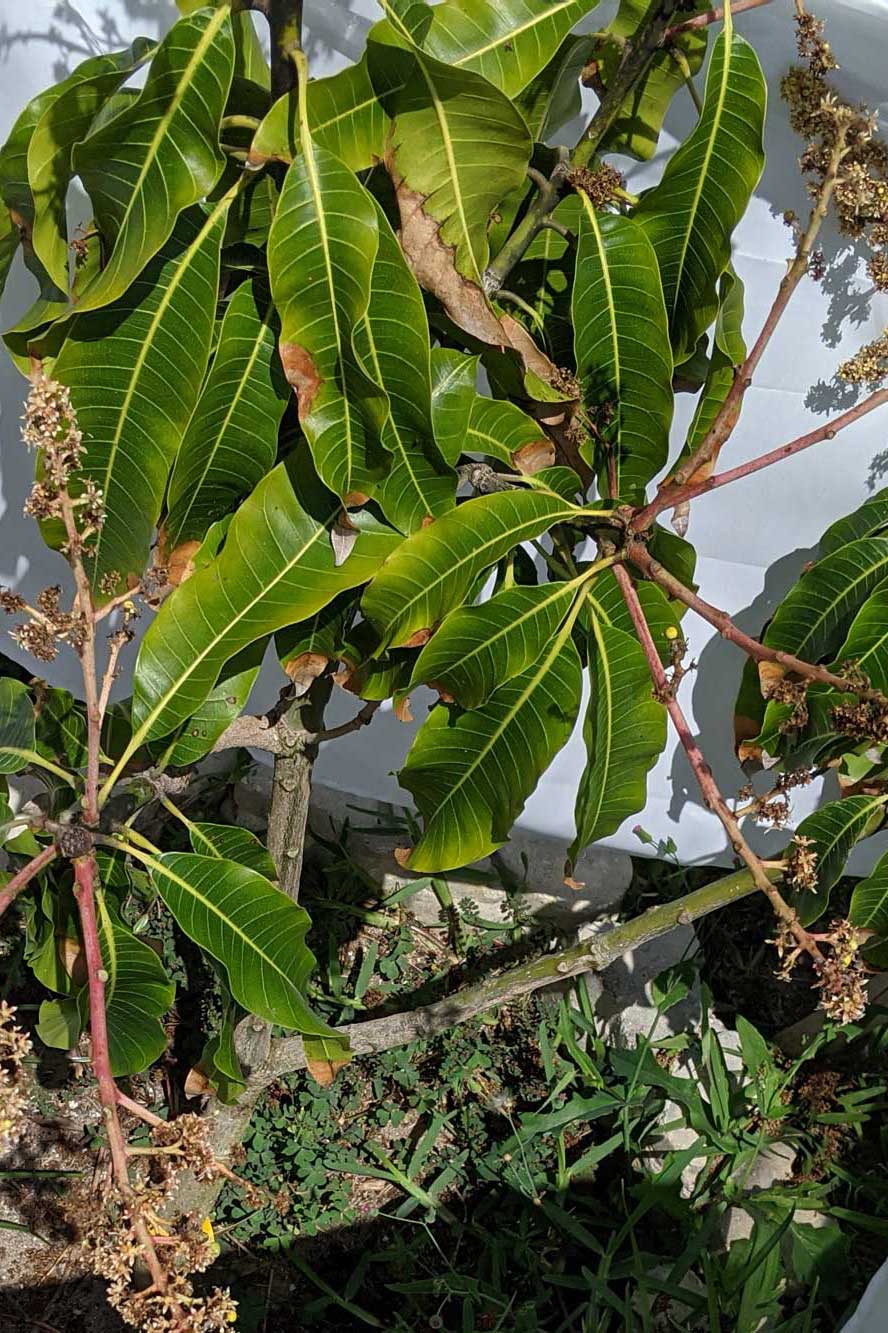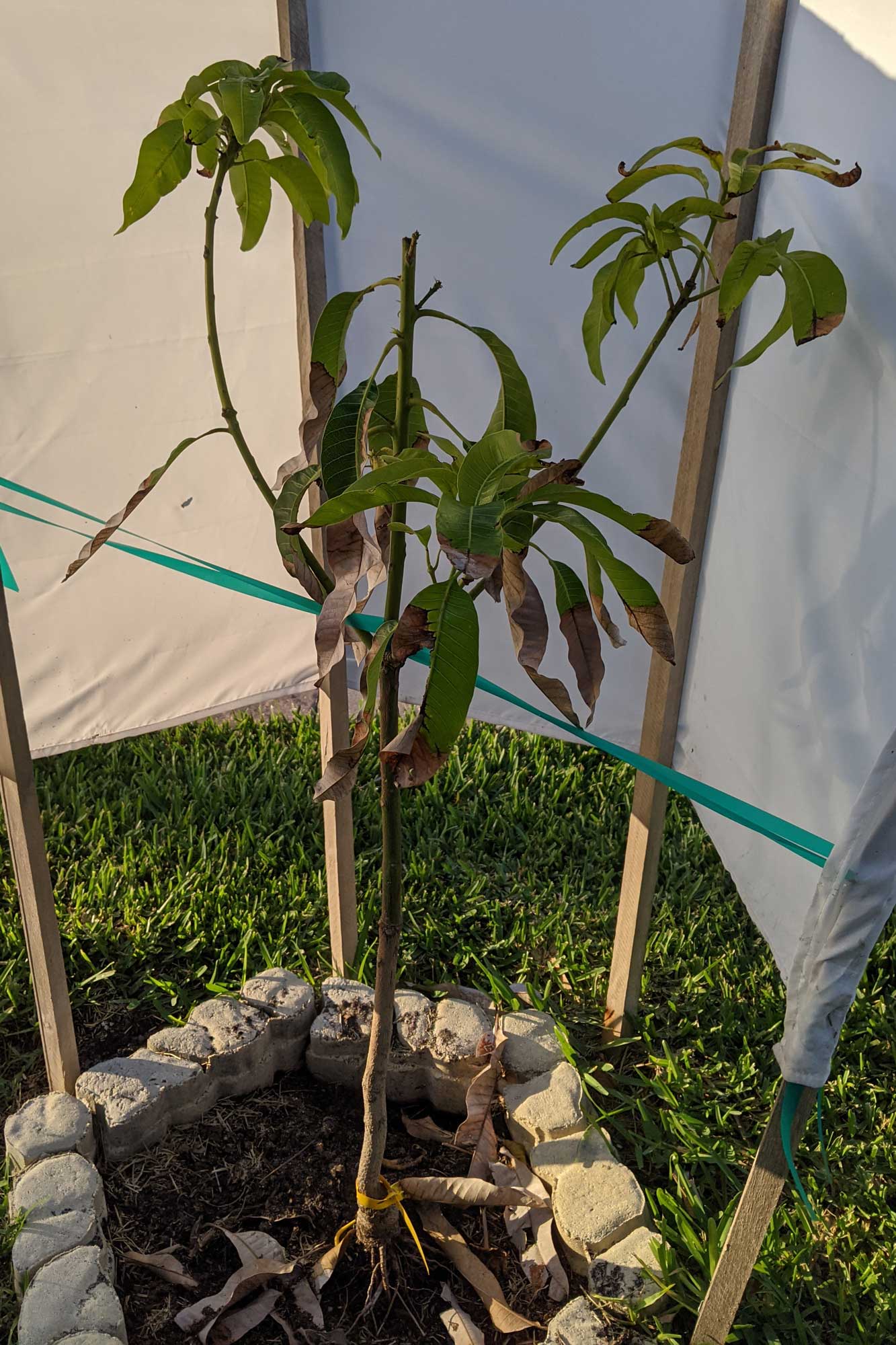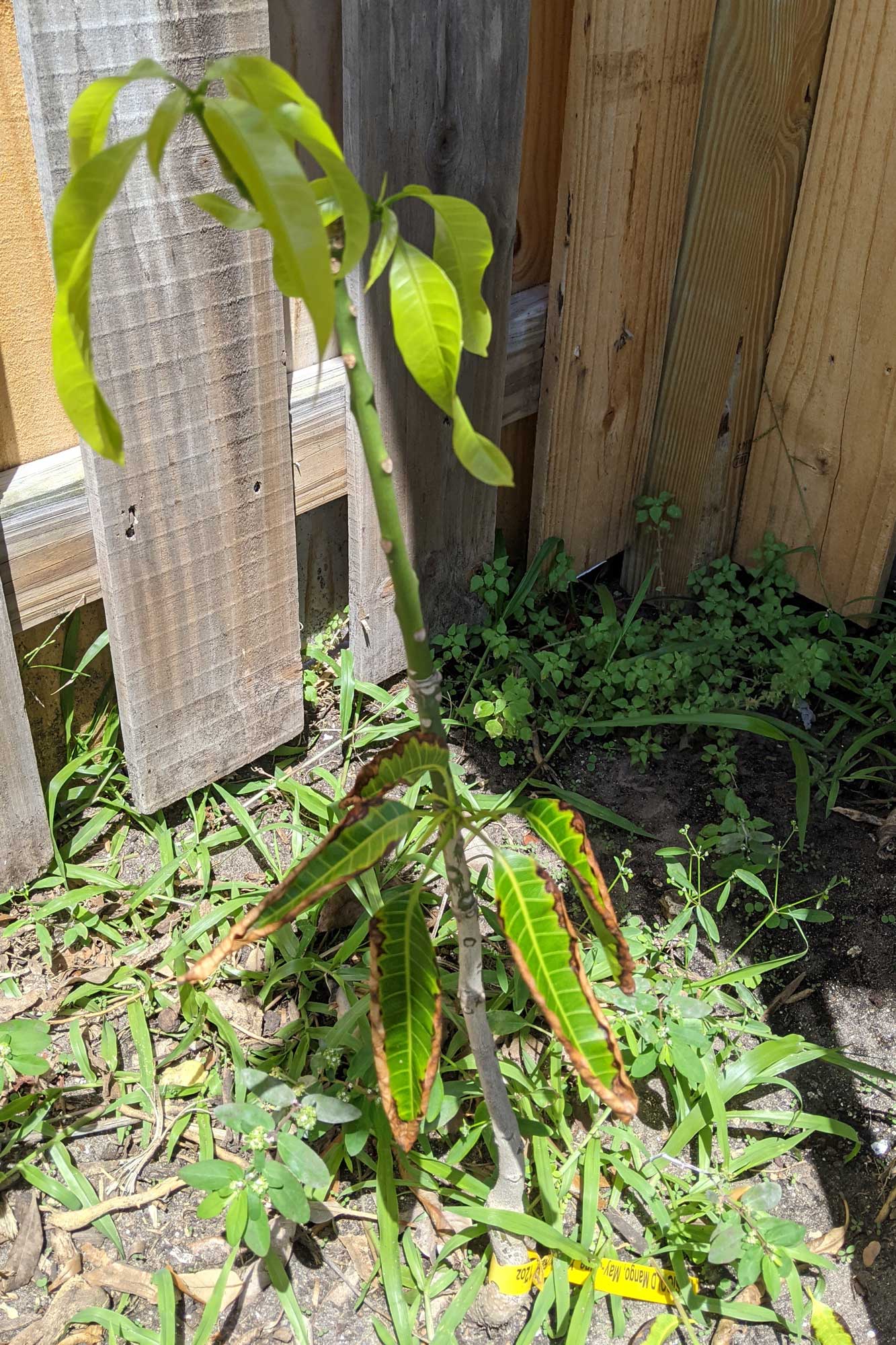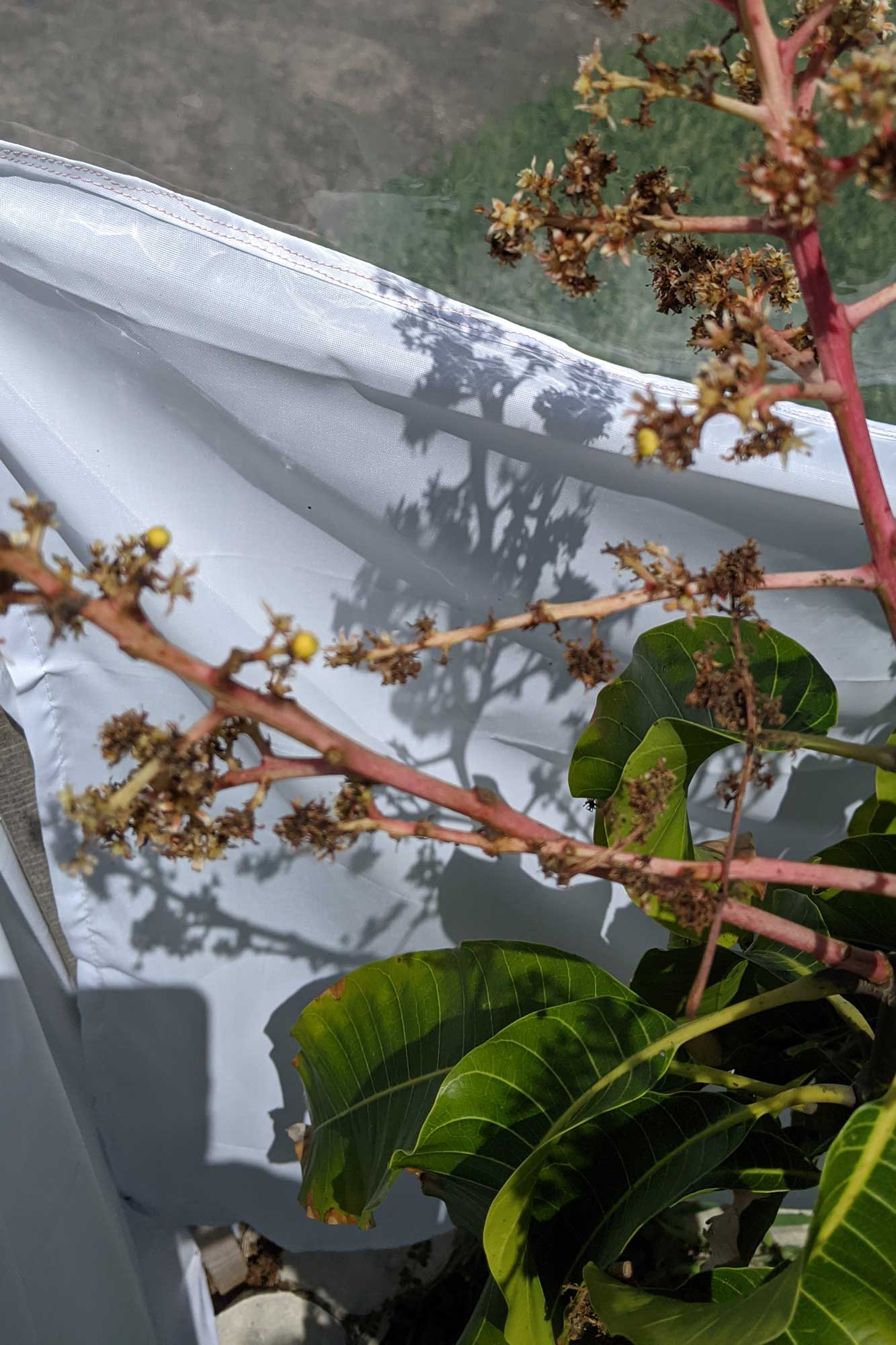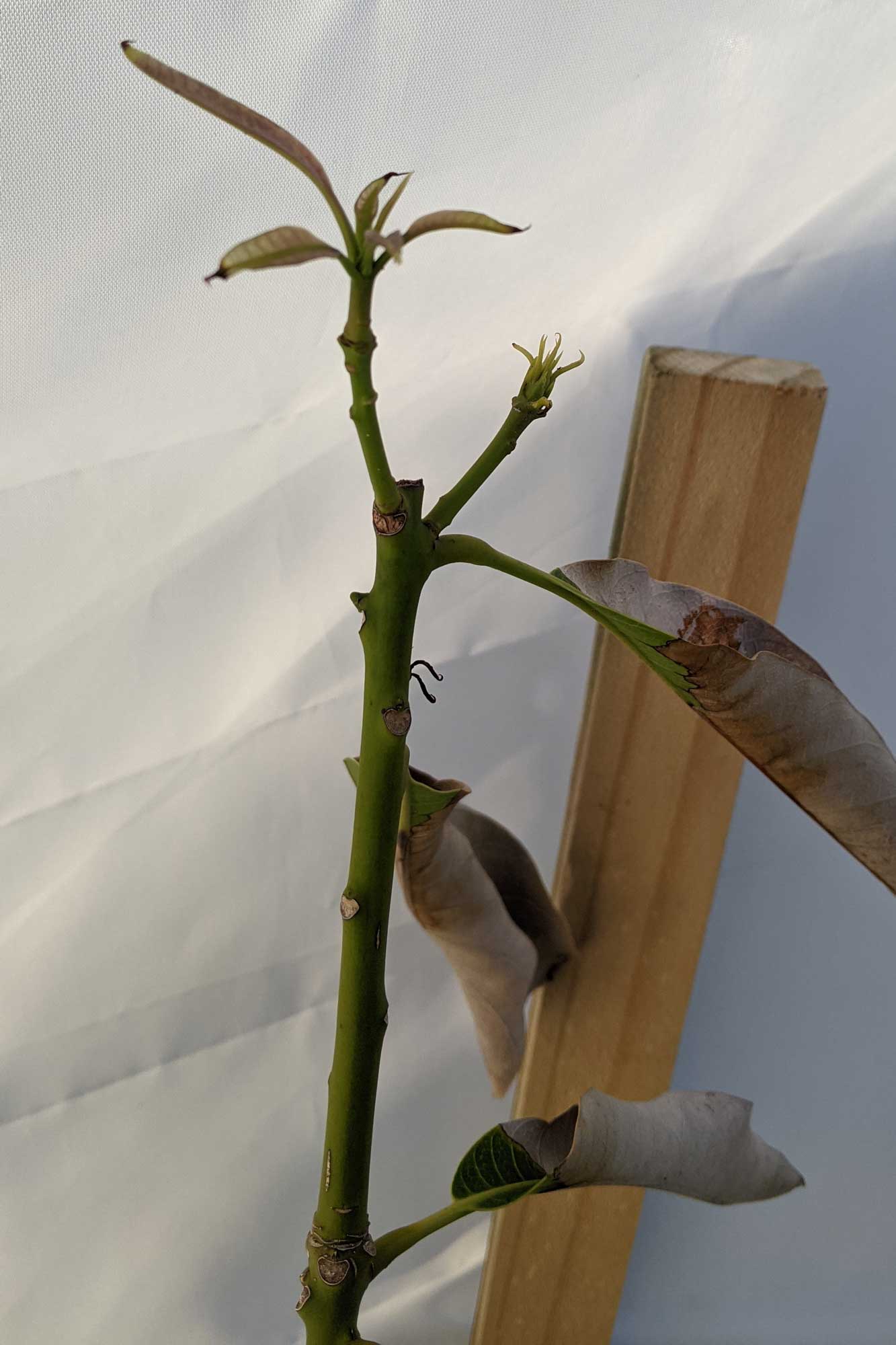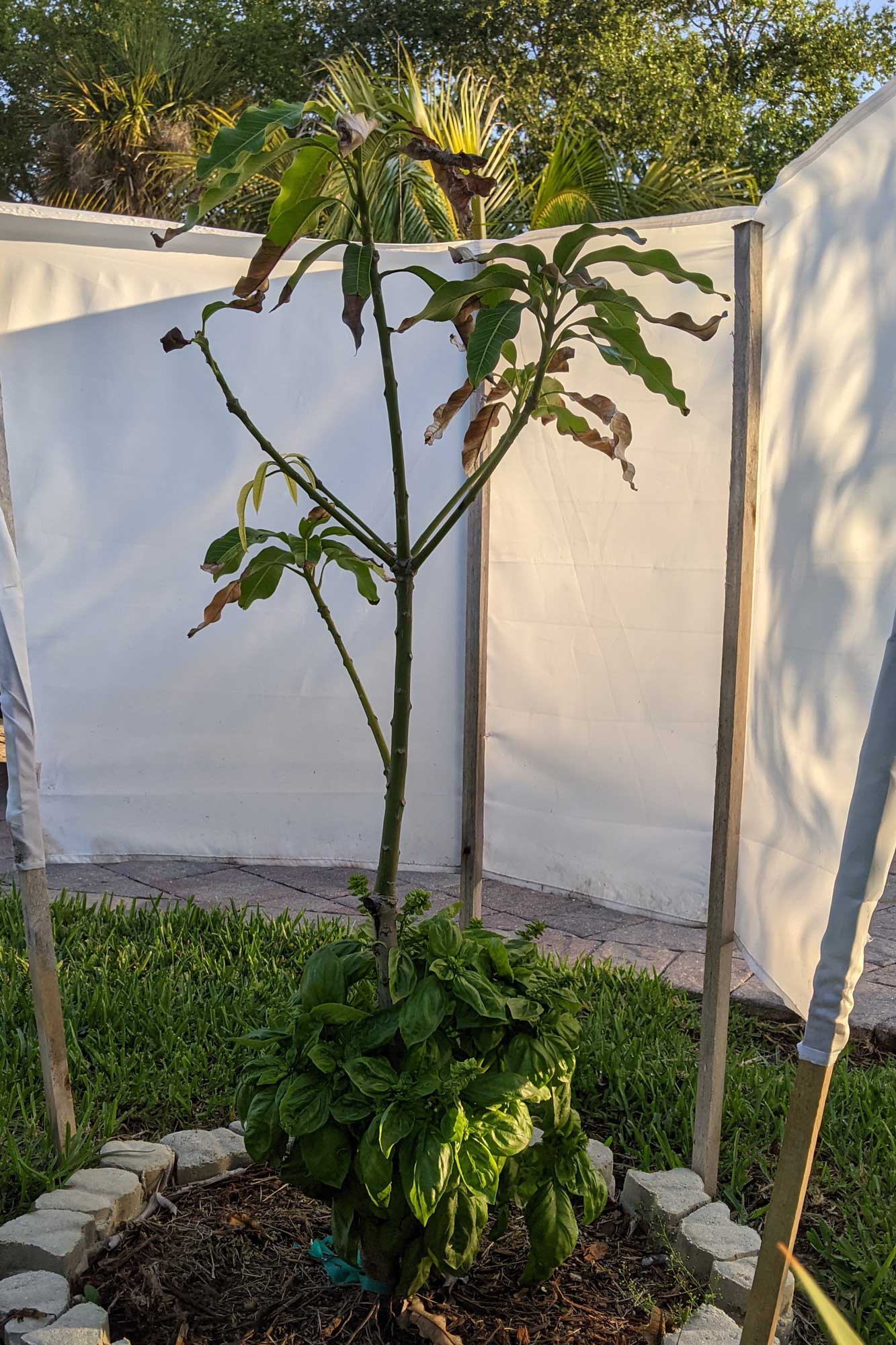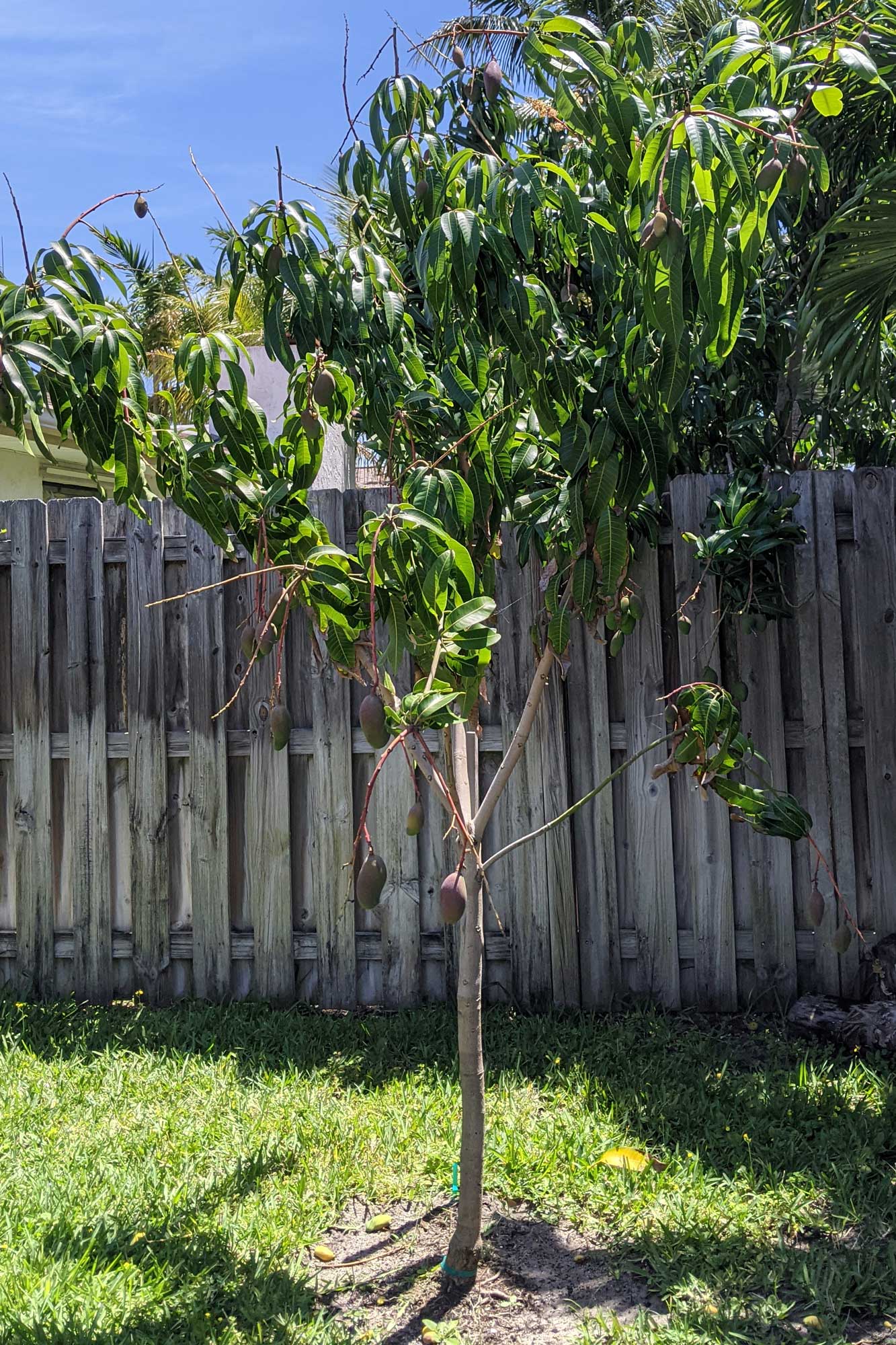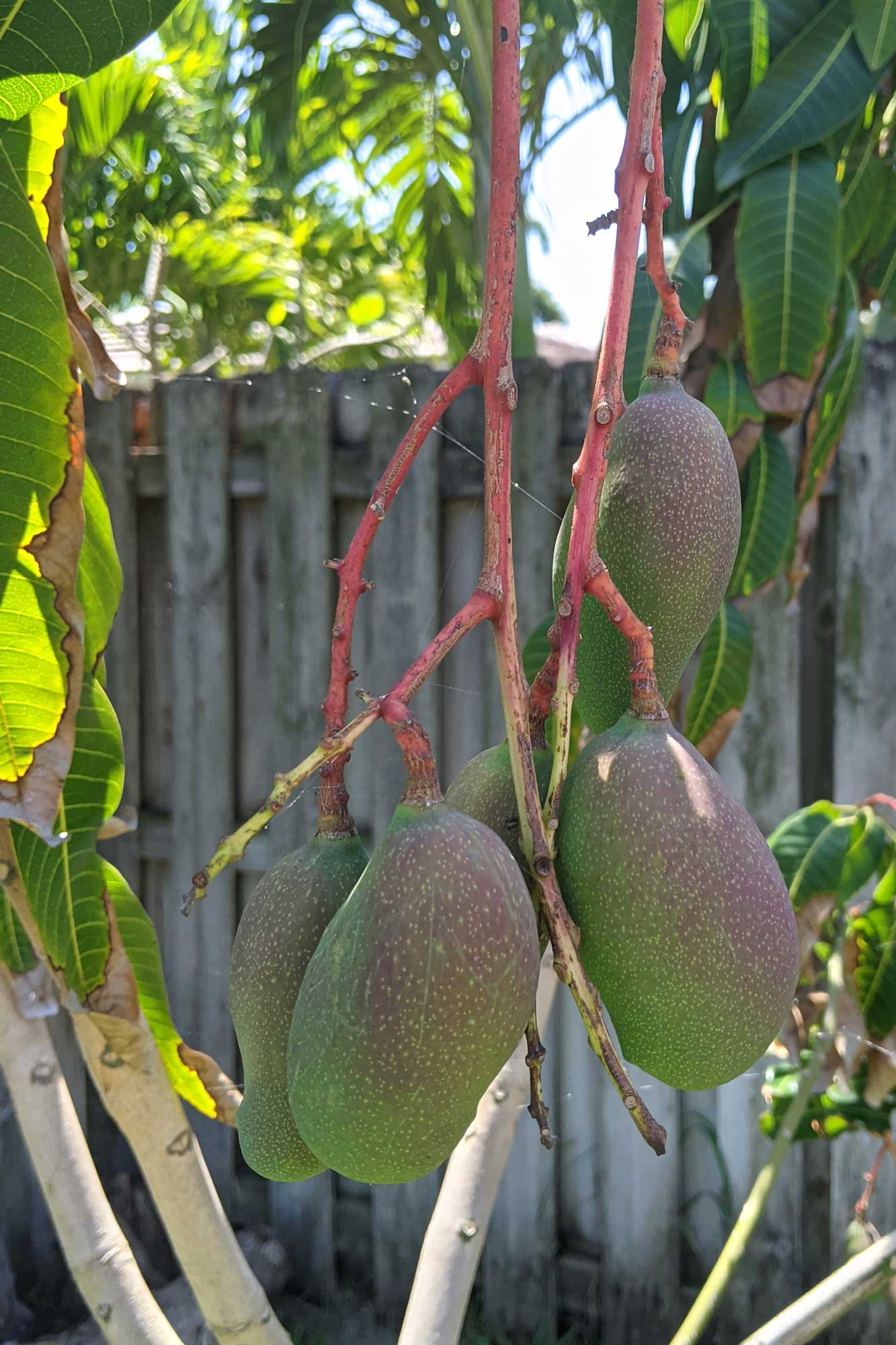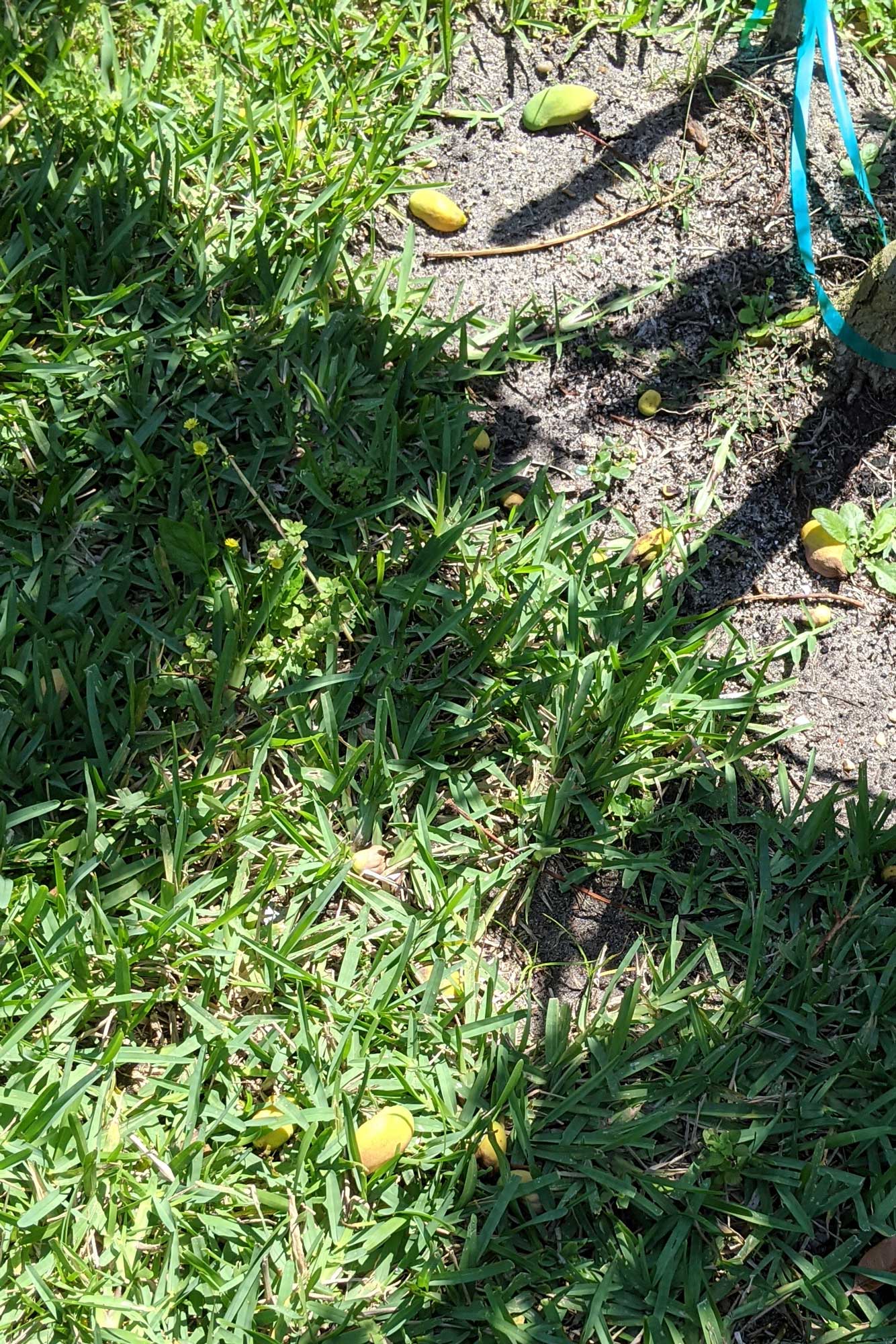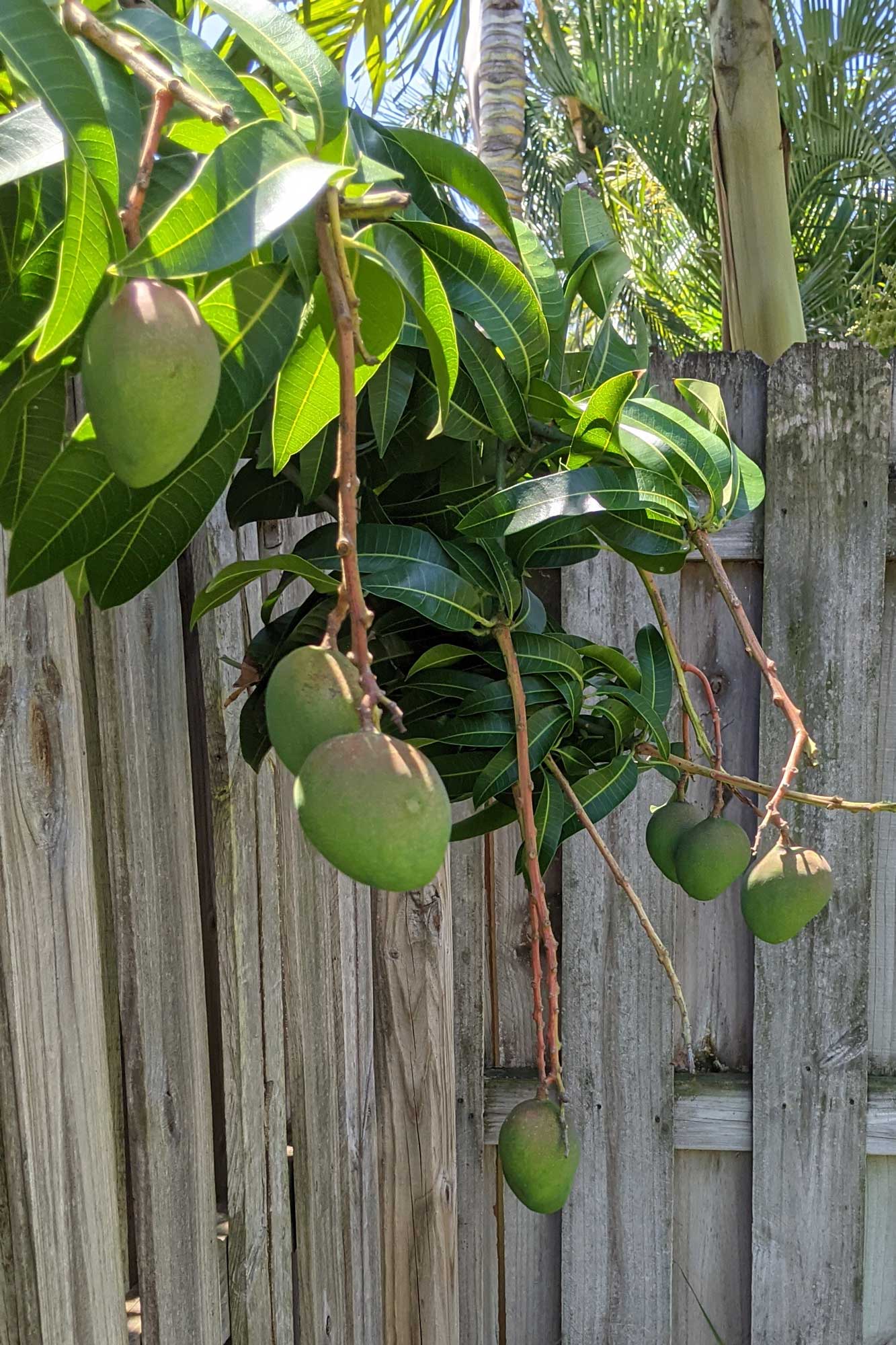As someone who had no idea *specifically* how fruit grows on a tree before I started growing fruit, I’m documenting the growth of my fruit trees.
This is the first year after everything was planted. My mango trees were planted from July to November last year. I live in Satellite Beach, Florida, on the Space Coast. Here in Brevard County, just east of Melbourne, we have salty, sandy, well-draining soil. We have well-water sprinklers for the lawn (bermuda grass loves it).
All my mangos in the path of our salty well sprinkler water suffered massive leaf damage, except the Valencia Pride, which was 30-gallons and tall enough for the leaves to avoid the sprinkler spray. Check out the captioned photos to see different trees mentioned here.
The Nam Doc Mai I planted out back never suffered the sprinkler damage, not being subject to the sprinklers. It hasn’t grown, it hasn’t died, it’s remained in the ground, healthy-looking but not growing. It did put out a pannicle in the early Spring, and developed a small fruit, but I cut that off to give the tree more strength to put into growth. I’m looking forward to watching it spring forth when it’s ready.
I had to move my small Rosigold and Cogshall Mango trees from the front to the back due to sprinkler damage. Both were leafless pronged sticks when I moved them. Both have leafed out, and lost those leaves, and leafed-out again, several times since I moved them. I’m not sure how well they’re doing, but I’m hoping for the best. The Cogshall looks healthier now, larger, with fuller leaves, but the Rosigold seems to be hanging in there.
My Fruit Cocktail is the only front (sprinkler-water) mango that I protected from day one of planting; consequently, it’s not suffered the major damage the others did. It bloomed a while ago, but the blooms looked – off – sort of black and withered – so I cut them off. It just bloomed again, and I left the blooms this time, as they seemed healthier. It already has some little mangos on it. I’ll probably leave 3 or 4 to develop, as the tree is not tiny.
I also have, in the front yard, Nam Doc Mai, Neelum, and Pineapple Pleasure mango trees. They are all hanging in, and I’ve done what I can to protect them from the sprinklers with shower curtains. (It’s quite the art installation). These three have battled both the salty water on their leaves, and aphids, which I’ve been combating with insecticidal soap. What I’ve been told is, with plants, “the first year it sleeps, the second it creeps, and the third it leaps.” So with these three, my goal is to baby them until they can reach the “leap” stage and overcome their locational challenges.
The pride (cough, cough) of my mango trees is a Valencia Pride. It was 30-gallons when we planted it, so already tall, but then it grew a great deal for the rest of the season last year. (Valencia Prides are vigorous growers.) This year it is covered with mangos. It had many more, but I’m learning that many mangos drop as they develop, as the tree self-regulates. The mangos should be ready to harvest in July and August, or so says the interwebs.
Then there is our neighbor’s Kent Mango tree … it’s close to the fence, and a number of mangos are hanging over our side. Fingers crossed our neighbors won’t mind if we help ourselves to a few Kent mangos! (I promise, we’ll ask first.)
I’ll keep updating the mango growth, for anyone interested in growing mangos in Zone 9b, Brevard County Florida! I’m hoping for, as my daughter used to say, a “growth sprout”!

